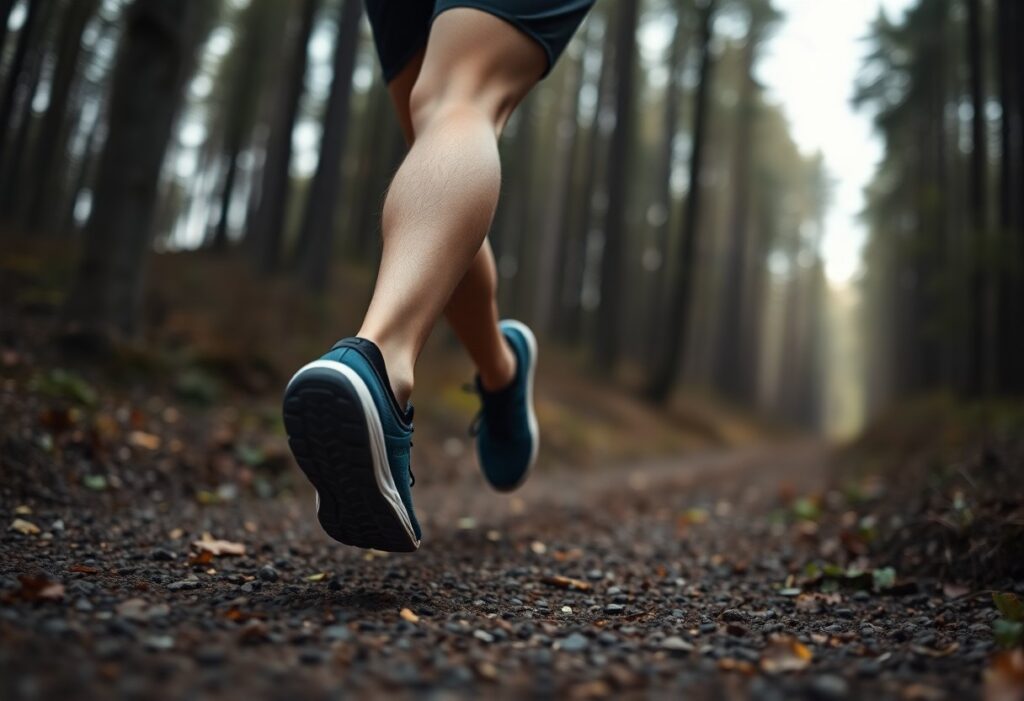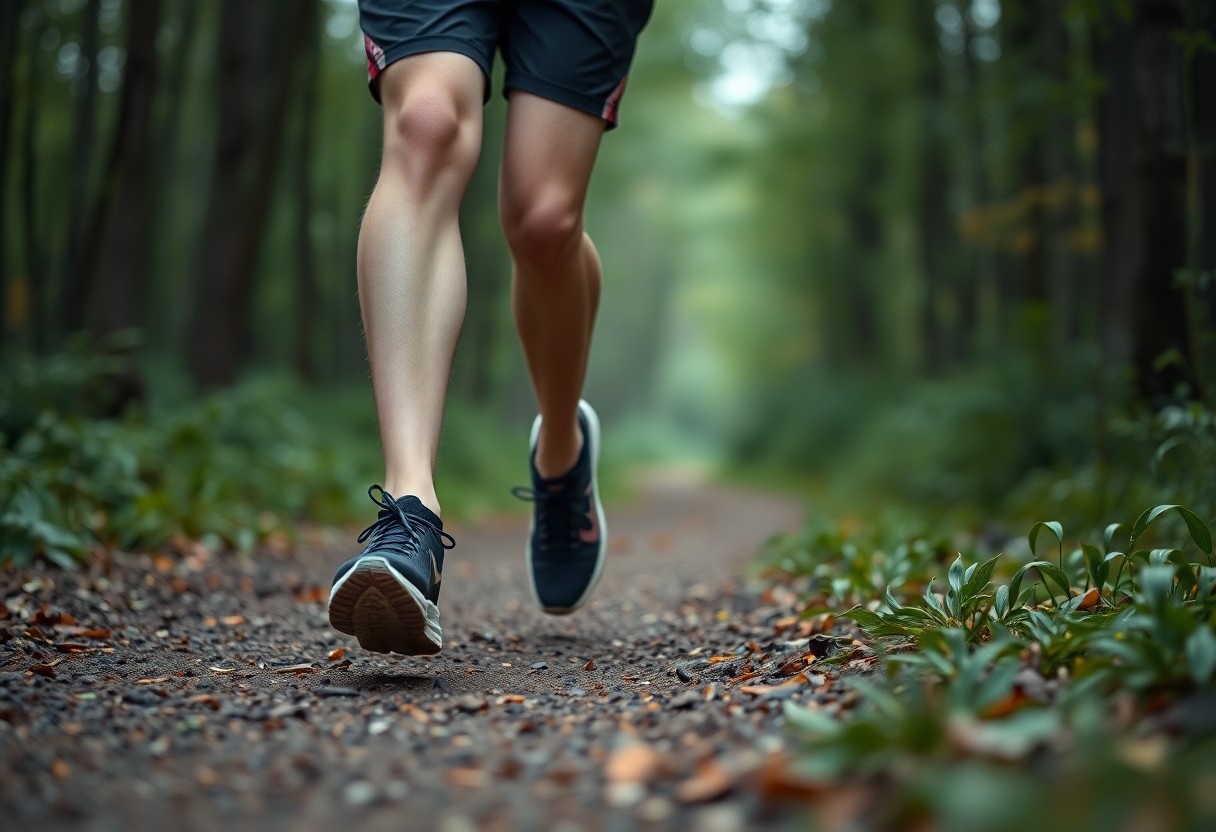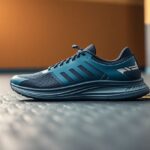
The alarming challenge of injury rates among trail runners can reach a staggering 62% each year, often stemming from the use of unsuitable footwear. Understanding the biomechanics of minimalist footwear and its interaction with uneven terrain is crucial for enhancing your performance while reducing the risks associated with running. Implementing wearable technology can effectively monitor essential metrics such as foot strike dynamics and load patterns. Additionally, personalised training programmes are tailored to improve foot strength and endurance. This article explores how you can leverage biomechanical insights and state-of-the-art technology for effective injury prevention strategies.

Enhancing Trail Running Performance Through Understanding Minimalist Footwear and Biomechanics
Successfully navigating the varied and rugged landscape of trail running while wearing minimalist footwear goes beyond merely selecting the right shoe; it demands a thorough comprehension of your own biomechanics. Ignoring the specific demands imposed by different surfaces can significantly elevate your risk of sustaining an injury. As foot strike patterns and descent mechanics fluctuate, adapting your running technique becomes vital for sustaining optimal performance and minimising potential setbacks. Delving into your biomechanical responses can empower you to make informed decisions regarding your footwear and running style.
Exploring the Variability of Foot Strike Patterns on Technical Trails
Foot strike dynamics exhibit significant variability when traversing intricate landscapes. Runners employing minimalist footwear frequently display a remarkable 23% higher prevalence of midfoot strikes on challenging trails, in stark contrast to the mere 8% observed with traditional running shoes. This adaptation may enhance your stability on uneven surfaces, yet it is accompanied by a 37% increase in metatarsophalangeal joint flexion angles, emphasising the need to strengthen your foot muscles for increased endurance and decreased injury risk. Understanding these dynamics can help you tailor your training to optimise your foot mechanics for trail running.
Assessing the Significance of Descent Mechanics and Ground Interaction
The mechanics involved when descending from elevations are crucial in shaping your performance and potential for injury in trail running. Wearing minimalist footwear can lead to a substantial 42.191 BW/s increase in vertical loading rates on steep 15% declines, particularly when compared to flat asphalt surfaces. This increase in loading results in more intense lateral toe engagement—observed to be 11% greater on loose gravel than on structured surfaces—underscoring the heightened demands placed on the structural integrity of your feet during descents. It’s essential to understand these mechanics to develop effective strategies for injury prevention.
As you traverse technical trails in minimalist shoes, the biomechanics of your feet engage distinctly. The elevated vertical loading rates during descents can lead to increased fatigue within your foot muscles, thereby amplifying your susceptibility to injuries. Additionally, significant alterations in toe splay patterns necessitate improved proprioception and muscle coordination, ensuring you remain responsive to the varying terrain beneath your feet. By concentrating on these biomechanical factors, you can effectively prepare your body to confront the challenges of diverse trails and optimise your overall running performance.
Uncovering the Challenges of Wearable Technology in Trail Running Performance Tracking
While wearable technology has revolutionised the world of trail running, it also presents significant challenges in accurately tracking your performance metrics. The variability of terrain conditions, including steep declines and uneven surfaces, complicates the data collection and interpretation processes. For example, wearable devices frequently struggle to provide consistent vertical oscillation measurements due to fluctuating ground conditions, leading to potentially misleading insights about your gait and running efficiency. Understanding these limitations is essential for maximising the benefits of wearable technology.
Analysing the Discrepancies in Data Accuracy Among Leading Performance Devices
Notable discrepancies in data accuracy have been observed among leading performance tracking devices. A study conducted in 2024 revealed a 12.4% variance in power measurements on 10% inclines between the Stryd and GARMINRP devices, despite both showcasing high intra-device reliability (ICC=0.89). Such inconsistencies can lead to misguided perceptions regarding your training load and overall performance, potentially impeding your ability to optimise your trail running capabilities. It’s important to remain vigilant about these discrepancies to ensure effective training.
and GARMINRP devices, despite both showcasing high intra-device reliability (ICC=0.89). Such inconsistencies can lead to misguided perceptions regarding your training load and overall performance, potentially impeding your ability to optimise your trail running capabilities. It’s important to remain vigilant about these discrepancies to ensure effective training.
The Implications of Miscalculating Training Loads on Performance and Injury Risk
Miscalculations in training loads can escalate by as much as 23% on mixed-terrain routes, directly affecting your risk of injury and your performance progression. This error often arises from inaccurate data interpretation during technical descents or on uneven terrains, compelling you to rely on potentially flawed metrics. Such discrepancies can lead to overtraining or insufficient load management, significantly increasing your chances of sustaining an injury while running. It's crucial to monitor your data closely to ensure your training intensity aligns with your capabilities.
When navigating complex trail surfaces, the gap between measured and actual exertion can skew your training insights. If your device underreports your exertion, you might inadvertently push beyond your limits, leading to increased fatigue and delayed recovery. Conversely, if your training load is overestimated, a more cautious approach may ensue, inadvertently hindering your performance gains. In conclusion, ensuring that your wearable technology informs rather than misleads your training strategy is vital for maintaining both your performance and overall health in the dynamic realm of trail running.
Investigating Gender Differences in Trail Running Biomechanics
Gaining a detailed understanding of the biomechanical differences between male and female trail runners can significantly enhance performance while minimising injury risks. Research indicates that anatomical and physiological variations influence shoe selection, gait patterns, and susceptibility to injuries. Customising footwear and training programmes based on these gender dynamics cultivates safer and more effective outdoor running experiences, ultimately benefiting both male and female athletes.
Examining Gender-Specific Biomechanical Responses Post-Exercise
Post-exercise, female runners have demonstrated a 19% increase in lateral forefoot pressures compared to their male counterparts after completing 5km barefoot runs. Furthermore, they exhibit a 22% reduction in navicular drop during 50km ultra-marathons, signifying that their biomechanical adaptations to trail running are distinct. Recognising these patterns is essential for improving footwear design that accommodates the unique biomechanics of female runners, fostering enhanced comfort and performance.
Implementing Tailored Solutions to Address Gender-Specific Challenges
To effectively tackle the unique biomechanics of female runners, it is crucial to implement customised solutions that take their specific physical characteristics into account. Tailoring training programmes, utilising gender-appropriate footwear, and enhancing strength regimens can significantly lower injury rates while improving running performance. For instance, integrating exercises that focus on intrinsic foot muscle endurance and stability can be particularly beneficial for women, who may face differing loading patterns on technical terrains. Awareness of these unique biomechanics enables better training outcomes.
By analysing data from various studies and incorporating findings on gender-specific responses, you can better focus on training and footwear that actively support your unique biomechanics. For example, leveraging targeted strength training regimens that enhance the lower leg and foot can help your body adapt to the heightened demands of trail running, particularly for women who often experience increased pressure in the forefoot region. Choosing shoes specifically designed for your unique foot mechanics can further assist in addressing common injuries, ultimately fostering a more rewarding and sustainable trail running experience.

Utilising Innovative Techniques for Real-Time Gait Analysis in Trail Running
Your running performance and safety can greatly benefit from adopting real-time gait analysis using advanced technological methods. By employing integrated systems and wearable devices, you gain immediate feedback regarding your foot strike patterns, body mechanics, and overall movement efficiency. These sophisticated tools are designed to provide actionable insights while you are actively on the trail, empowering you to dynamically adjust your technique and avert repetitive strain injuries that are commonly associated with improper running form.
Understanding How Embedded Sensors Help Prevent Injuries
Embedded sensors within footwear play a vital role in injury prevention. They continuously monitor your foot strike patterns and pressure distributions in real-time, facilitating immediate corrective feedback. This advanced technology allows you to identify deviations from optimal running mechanics before they escalate into serious injuries. With a mere 19-millisecond latency in ground contact alerts, you'll receive timely notifications that assist you in maintaining alignment with biomechanical standards critical for injury avoidance. Such proactive measures can significantly enhance your running experience.
Evidence from Longitudinal Studies on the Effectiveness of Biometric Feedback Technologies
Longitudinal studies demonstrate noteworthy improvements in injury rates among trail runners who utilise biometric feedback technologies. Over a six-month period, athletes reported a 37% reduction in aberrant loading patterns due to consistent monitoring and adjustments informed by real-time data. This compelling evidence underscores how sustained engagement with these technologies can enhance your running economy and resilience, thereby reducing the likelihood of injuries linked to gait abnormalities. Continuous monitoring is key to injury prevention.
For instance, a comprehensive study involving 250 trail runners documented the effectiveness of wearable sensors in identifying patterns that lead to overuse injuries. Runners who actively engaged with feedback systems reported a 30% lower incidence rate of common injuries such as plantar fasciitis and Achilles tendinitis compared to those who relied solely on traditional training methods. The emphasis on continuous tracking, coupled with targeted adjustments based on data insights, highlights a trend towards a more proactive approach to injury prevention in the field of trail running.
Integrating Insights for Optimal Trail Running Performance and Injury Prevention
Ultimately, understanding the biomechanics of trail running in minimalist footwear is crucial for optimising your performance while minimising the risk of injury. By seamlessly integrating wearable technology and adopting personalised training methodologies, you can significantly enhance both your foot strength and adaptability to various terrains. Regularly cross-validate metrics from different devices and monitor your gait using advanced tools to effectively personalise your training regimen. This comprehensive approach not only supports your running journey but also fosters sustainable practices in your outdoor pursuits.
The Article Trail Running Biomechanics in Minimalist Footwear: Integrating Wearable Technology and Injury Prevention Strategies appeared first on My Shoes Finder
The Article Trail Running Biomechanics: Injury Prevention with Minimalist Shoes Was Found On https://limitsofstrategy.com







It’s fascinating how the choice of footwear can dramatically impact injury rates among trail runners! I’ve personally experienced the difference that the right shoes can make. Transitioning to minimalist footwear has not only improved my agility on rugged trails but also made me more conscious of my foot strike. I find that incorporating strength training into my routine has really complemented my running as well, building the muscles I didn’t realize were crucial for stability.